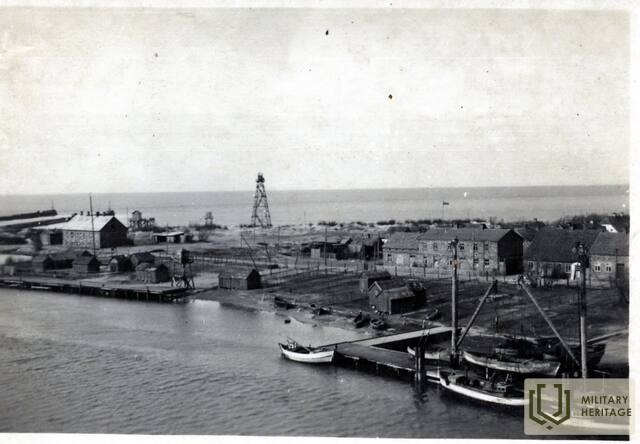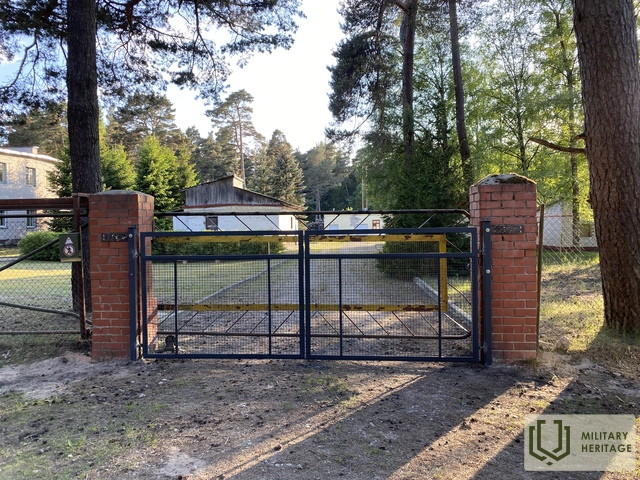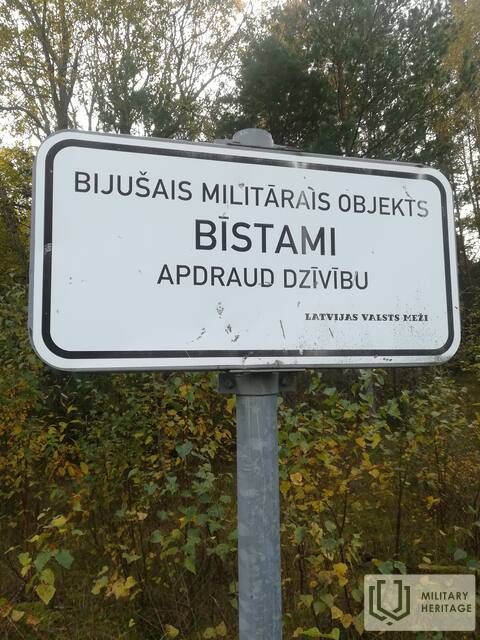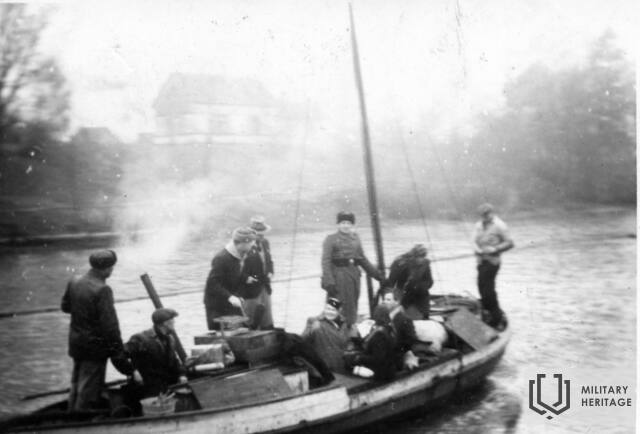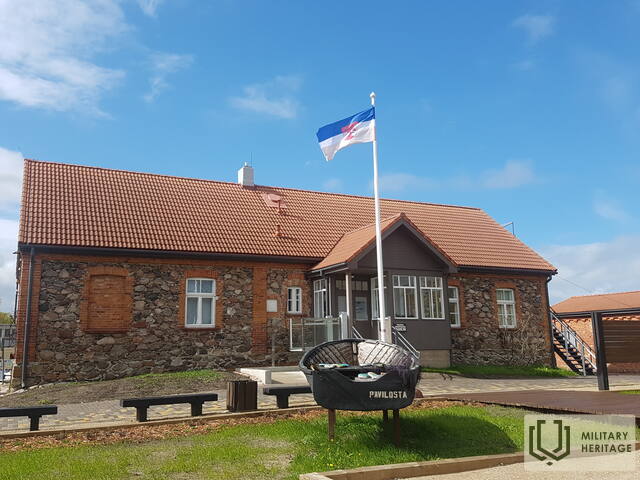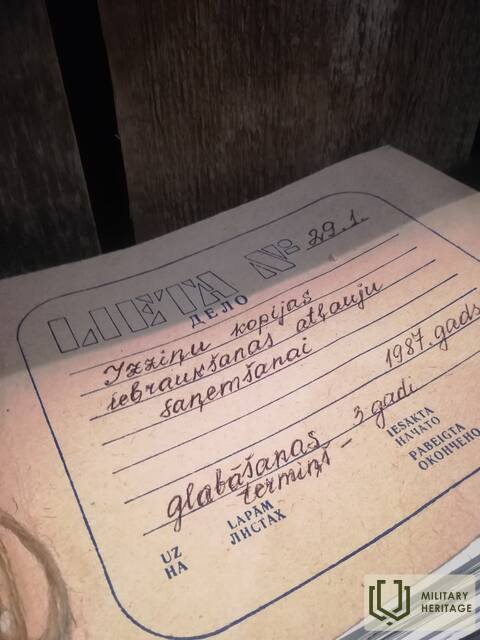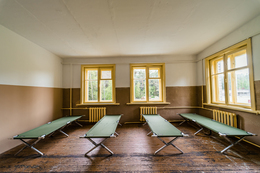Pavilostnieki
Pāvilosta residents Aina Jakovļeva and Irina Kurčanova share their memories of the Soviet era in Pāvilosta.
AJ I started going to Pāvilosta as a child, visiting a friend. I had to graze cows and the border guards also had cows, Darya. The cows had to be grazed in shifts, every day there was a different shepherd, because the whole village herded the cows into one herd. When it was their turn, the border guards also grazed the cows. They had their own farm – both pigs and cows. When I moved to Pāvilosta in 1981, my mother simply couldn’t visit me. The executive committee issued a certificate and the passport department issued a pass. One time, my mother hadn’t checked that the pass had expired, and the border guard had kicked my mother off the bus.
My father-in-law (a Belarusian by nationality) served in Akmesrags in the early 1960s. My mother-in-law told me that when my father-in-law was given time off, the two of them went on a date and met. They met for a couple of hours. After the army, my father-in-law demobilized, went back to Belarus, but then returned to Latvia and got married.
IK My father Nikolajs Zaretskis was from Smolensk, but he was drafted from Donetsk, because his father was from there. My father served for four years, because in connection with the events in Cuba, his service was extended. He began serving in Lithuania, then in Riga, then in Pāvilosta. He was in Pāvilosta from 1962. On January 1, 1963, at the New Year's ball, he met my mother. On June 1, 1963, the two celebrated their wedding, but my father was still serving. His service ended in November. After that, my father went to sea, worked as a ship's mechanic. In Pāvilosta, there were border guards, missilemen, signalmen (served locators) and a small number of sailors (for a short time). The bases for all units were across the bridge over the Saka River. In the 1960s, barracks were built there for soldiers and family homes for officers - rocket engineers and signalmen, where they lived with their families. Until the mid-1970s, their children came to study at a Russian school, when the school was liquidated, they took the Russian-speaking children to Aizpute. Representatives of various nationalities served, including Latvians, but very few.
The army men had their own shop and very good supplies. Sometimes they would tell me when oranges and bananas would be available. I tasted my first bananas in the early 1970s, I didn't know what kind they should be - green or yellow. You could get tights for children and shoes in the shop. We went to that shop, first the officers' wives went shopping, then we, the local people of Pavlodar, stood in line and bought things, starting with food and ending with clothes (towels, sheets, bed linen). Their supplies were completely different. At first we were scared, but then we realized that there was nothing to be afraid of.
There was also a time when fuel was in short supply, so a large number of people from Pāvilost drove with army fuel. They themselves sold it.
The events were always held on May 27th - Border Guard Day. The events were held at the army unit and at the Pāvilosta Culture House, where beautiful concerts were held. The students went to greet the border guards.
The army men participated in both the aid and the city improvement works with both equipment and manpower.
Meanwhile, on February 23rd – Army Day, border guards came to the school to evaluate the privates’ performances. Many officers lived here with their families, most of the officers’ wives worked – in a kindergarten, in my kindergarten the officer’s wife was a nurse, very nice with blond, curly hair.
The most interesting and unusual thing for the Pāvilosts was that the officers always went with their wives if the child needed to be taken to the doctor. The Pāvilosts never did this, they were amazed by this. But the officer always helped his lady undress and dress the child.
Quite a few girls from Pāvilosta married guys serving in the army. My father served in the rocketry unit in Pāvilosta.
It's interesting that when we meet during the Revival in the late 1980s to celebrate Līgo and Jāņi, we celebrate with Latvians – Popkovs, Krivcovs, Ivanovs, Kurčanovs, Yakovļevs, but all of them are Latvians. The girls didn't go to Russia with the boys, the boys stayed here.
Two men who worked in the unit still live in Pavilosta. Zinchenko and Zakharov. Zakharov works in Liepaja, it is difficult to meet him. Of the Latvians, officer Ilmārs Roze served here, now lives in Kuldīga.
AJ Pāvilosta border guard group was formed in the early 1960s, because when I started working at Pāvilosta Secondary School, the groups were already operating. Orīda Grīnberga, the founder of the Pāvilosta Museum, began to promote cooperation with the border guards. One of the most important points in the school trips was visiting the border guards, the students really liked it there, because the border guards had come up with all kinds of attractions. They allowed them to see weapons, but the main object of interest was the border guard dogs. If the border guards were not included in the trip, the trip was not a success. The border guards showed off their living, study and recreation rooms, the dining room, etc. I always remember the perfect order in the barracks, the blankets tightly pulled over all the beds. The yard was also tidy, flowers arranged.
When the army left, it left its entire territory in excellent order.
Starting in 1987, I led a border guard group, in which both boys and girls actively participated. My duty was simple, once a week I had to take the children to the border guard unit and there they worked – they learned to operate walkie-talkies, disassemble and assemble automatic weapons, participate in various war games. Competitions were also organized, the group participated in competitions in Vārme, once we won 1st place, as a prize we received a radio set “Selga.”
Students were able to visit the restricted area during hikes. A list of participants was drawn up, and students often went hiking from the southern pier of Pāvilosta to Akmesrags along the sea.
IK Speaking of the port of Pāvilosta, there is a saying “Mi skaimiņš paidjom na mol zuš laviķ!” If someone went to the pier to fish, they first had to report to the border guards. One man had already forgotten how to speak Russian, but had not yet learned Latvian. The border guard takes a list of local residents and looks for the surname Skaimiņš and cannot find it, because such a surname no longer exists.
All the great chiefs already went to sea and fished for salmon with the locals.
Coastal fishing in Pāvilosta was also prohibited. Fishermen went to sea on RB-type vessels, the vessels were checked by border guards every morning when they went out to sea and every evening when they entered the port. Swimming was allowed from the northern pier to the large Jūrakmenis, about 1 km. In the summer, you were allowed to stay on the seashore until 22:00 in the evening. Jūrmala was regularly plowed until the mid-1970s, and then no longer. It was strictly forbidden to take photos on the seashore, so photographs of that time are a huge rarity. The same dune, now the famous Grey Dune, where marine dung was dried, has not been captured in photographs and now there are disputes about what it really looked like.
Most of the amber and all sorts of interesting things washed up on the shore behind Jūrakmens, where you couldn't go. Then the boys rode quickly on mopeds and collected these things, but the border guards caught someone every now and then. They ordered them to peel potatoes and let them go home, but they didn't take away the "trophies" or the amber they had obtained.
AJ Once, my friend Anita and I, we were sitting in our yard with our friends, there was also an executive committee there. By chance, one of the guys knocked on the window with his hand. Suddenly, a border guard hut drove into the yard, border guards jumped out with rifles, ordered both guys to put their hands on their backs, get into the hut and take them away. They took them to the post, there they made them peel potatoes, after three hours they let them go home. Taking them away was no big deal."
Related objects
Soviet army military base in Pāvilosta - active recreation centre
During the Soviet era, a border guard unit was located here, other Soviet army units - liaison officers and a surface-to-air missile base were located several kilometres away in the forest. After independence, the Latvian army was stationed there.
The former Soviet army military base is now a recreation, leisure and camping centre - for personal development in interaction with nature and the people around.
A place for recreation and accommodation for both tourist groups and families. Rooms, showers, WC, fireplaces, spacious area for activities, sounds of nature. Book in advance by calling +371 26314505.
Pāvilosta local history museum exposition
Named ‘Pāvilosta, a Closed Area’, the exhibit in the Pāvilosta Local History Museum is about everyday life in the town of Pāvilosta during the Soviet occupation; specifically, about the executive branch, border area, fishermen’s collective farm, and the cultural and social activities. In addition to the permanent exhibit, there is an interactive and emotionally rich digital exhibit in two languages and an audio-visual installation offering a film about Pāvilosta.
The museum also features a new exhibit named ‘The Golden Sand Grains of Pāvilosta’. The digital installation showcases old events, how Pāvilosta was founded and the most important developments from 1918 to the present day. Military heritage is a point of focus in the War of Independence section, which tells a story about the freedom fighters of Latvia and the time of the Soviet occupation.
Former Soviet border guard observation tower in Pāvilosta
The Soviet border guard observation tower is located near the South Pier in Pāvilosta. The former Soviet border guard observation tower, which had been out of use since the early 1990s, now serves as a viewing platform with a 360-degree rotating land telescope. It offers beautiful views of the sea and ships and can be used for bird watching. Ascending the tower is only allowed during daylight hours in the summer season. As the stairs in the tower are quite steep, visitors should evaluate their abilities, health and associated risks. The observation tower and the surrounding area has video surveillance. The tower is closed to visitors during the winter season.




